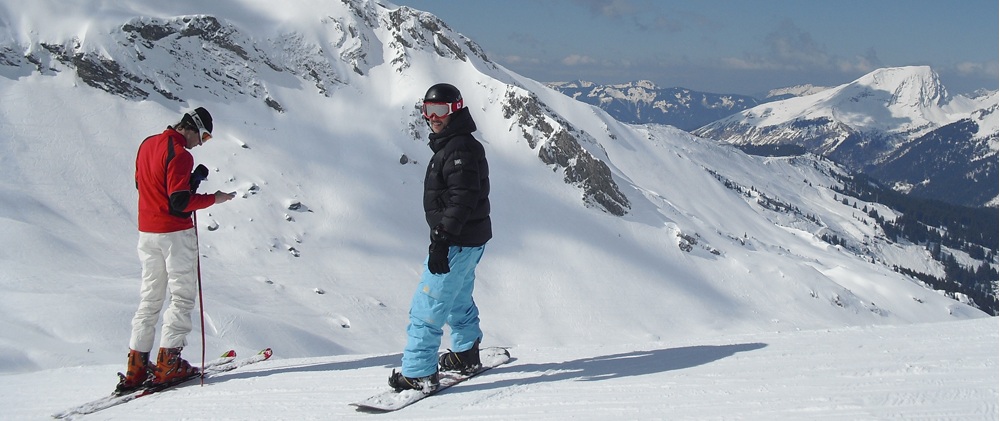Safety on the slopes
Snowsports by their nature are high speed, and for the more advanced often include tricks and jumps which can be dangerous for the performer and those around him or her. As with any potentially dangerous sport, many accidents can be prevented through preparation.

Before you go
Snowsports can be both fun and physically demanding. Many injuries occur purely because of lack of fitness. Be sure to keep up your level of fitness by hitting the dry slopes or doing some form of exercise before you head off on your ski or snowboard holiday in order to prevent unnecessary injuries and cutting your time on the slopes short.
The right equipment
When getting kitted out for your trip, make sure you think about the
safety element as well as warmth and style. Firstly make sure everything
fits properly as things like ill fitting boots can cause problems.
Secondly make sure you have the right equipment, an important
consideration is whether to wear a helmet or not. Studies have shown
that helmets can decrease the severity of head injuries so it is
recommended that everyone wear a helmet.
Insurance
Insurance is a must when going up the mountain. The Ski Club of Great Britain conducted a poll which revealed that more than one third of skiers and snowboarders do not have enough coverage.
In the event of an accident, rescue fees (especially if by helicopter) are very expensive and medical costs can end up costing a fortune - an air ambulance in Europe costs between £5,000 to £10,000, whereas in north America unlucky skiers could pay out as much as £30,000.
Even if you have an EHIC Card you should still make sure you are properly insured by taking out an appropriate winter sports policy which includes cover for the activities you intend to take part in.
At the slopes
Treat snowsports like any other sport, be sure to warm up before you head up the mountain and cool down afterwards to reduce the risk of injuries.
The local resort information will show you the best routes to take on the piste. Stick to these and close to other skiers and snowboarders so that if you do have an accident or get into trouble help will be close at hand.
Listen and keep an eye out for weather announcements. Whilst the resort
will do everything it can to keep you safe, the weather is often
unpredicatable and the conditions can change quickly.
Whilst you might be having fun on the slopes it's important to take breaks and re-fuel with food and drink. The cold weather and high levels of exercise will use up a lot of your energy so make sure you pace yourself so you don't have to cut your trip short.
Code of Conduct
The International Ski Federation (FIS) outline some basic rules for all snowsport participants to follow on the slopes. You should familiarise yourself with these to know what is expected of you. The rules are mostly common courtesy acts such as not endangering others, and they can be found here.





